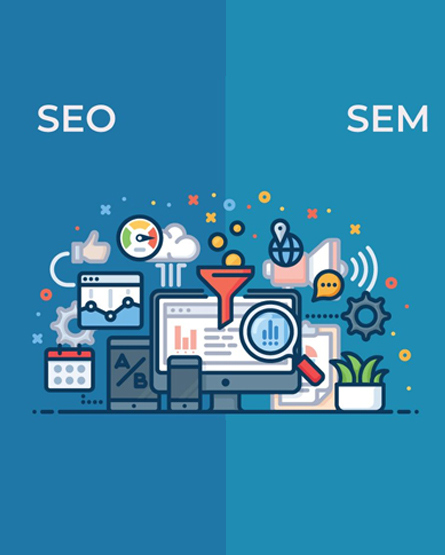I hope you enjoy reading this blog post.
If you want to get more traffic, Contact Us

Click Here - Free 30-Minute Strategy Session
Be quick! FREE spots are almost gone for this Month. Free Quote

Ecommerce businesses operate in a highly competitive digital landscape, requiring robust marketing strategies to stand out. A well-executed strategy helps businesses attract targeted customers, increasing website traffic and conversion rates. Since consumer behaviour leans heavily on online interactions, brands must adapt to trends in order to remain relevant.
With the rise of mobile commerce and personalised shopping experiences, buyers expect seamless digital interactions. Marketing efforts ensure brand visibility and foster loyalty, crucial for sustaining growth. Without a structured approach, ecommerce ventures risk remaining unseen amidst growing competitors. Effective marketing creates differentiation, driving long-term success.

Click Here – Free 30-Minute Strategy Session
Be quick! FREE spots are almost gone for this Month
Both SEO and paid ads emerge as cornerstone techniques within ecommerce marketing.
Search Engine Optimisation (SEO) refers to enhancing a website’s organic visibility on search engines through tailored strategies such as keyword optimisation, quality content creation, and backlink building. It focuses on long-term traffic growth by aligning with search engine algorithms and user intent. SEO requires consistent effort but produces sustainable results once rankings are achieved.
Paid ads, or Pay-Per-Click (PPC) advertising, involve businesses paying to display ads on platforms like Google or social media. These ads generate immediate traffic by targeting specific audiences and keywords. Unlike SEO, results stop when the ad budget ends, prioritising short-term outcomes over organic growth.
Paid advertising offers immediate visibility, placing products directly in front of target audiences. It enables ecommerce businesses to bypass organic rankings and strategically target specific demographics based on preferences, purchasing behaviour, and geography. With PPC campaigns, businesses can gain measurable data to analyse performance, optimise budgets, and refine targeting.
Paid ads guarantee greater control, essential in competitive ecommerce markets.
When evaluating SEO and paid ads in terms of cost, each offers distinct budget implications.
Businesses must weigh initial investments against returns over time to select the appropriate strategy.
SEO typically requires a long-term commitment, with noticeable results often materialising after three to six months of consistent effort. Factors such as keyword competitiveness, website authority, and the quality of content all play a role in determining the timeline. Paid ads, on the other hand, yield results almost immediately after campaign activation. Ads can start driving traffic and conversions within hours or days, provided the targeting and budget are optimised.
While paid ads excel at generating instant visibility, SEO builds sustainable growth over time. The timeframe for each strategy depends on business goals, budget constraints, and the level of competition within the market.
SEO and paid ads offer contrasting approaches to targeting audiences. SEO focuses on organic reach, drawing users actively searching for specific terms, ensuring precision in aligning content with user intent. Paid ads, on the other hand, provide granular targeting options, allowing businesses to define audience segments based on demographics, behaviours, and interests.
While SEO is scalable over time, its growth relies on consistent optimisation and content creation. In contrast, paid ads offer immediate scalability but often come at a high cost. The key difference lies in longevity; SEO provides sustainable traffic, whereas paid ads demand continuous investment to maintain visibility.
Ecommerce businesses often face the challenge of balancing quick results with sustainable growth. SEO serves as a long-term strategy, cultivating organic traffic through high-quality content, backlinks, and on-page optimisation. Its impact builds over time, ensuring consistent visibility without ongoing costs. Conversely, paid ads promise instant visibility but require continuous investment to maintain results, making them ideal for short-term goals like product launches or seasonal campaigns.
To integrate both, brands can use paid ads to attract immediate traffic while investing in SEO to foster enduring growth. This synergistic approach mitigates risks and aligns strategy with evolving market demands.
Combining SEO and paid ads creates a comprehensive ecommerce strategy that maximises visibility and conversions. SEO establishes long-term authority by optimising product pages and creating high-quality content. Paid ads, on the other hand, deliver immediate results by driving targeted traffic to key products or promotions.
Effective integration requires aligning keyword strategies between both channels. Retargeting using PPC campaigns supports SEO efforts by re-engaging organic site visitors who didn’t convert initially. Additionally, data from paid ads can unveil high-performing keywords, benefiting SEO.
Coordinating both efforts ensures consistent brand messaging across organic and paid results. This synergy enhances customer trust, widens reach, and drives sustainable ecommerce growth.
Numerous ecommerce businesses achieve exceptional results through strategic utilisation of SEO and paid advertising.
These examples demonstrate the transformative potential of combined approaches.
The choice between SEO and paid ads depends on a company’s objectives, budget, and time constraints. SEO works best for long-term growth, offering sustained website traffic and lower recurring costs. It benefits businesses focused on building organic authority and achieving lasting visibility in search engine results.
On the other hand, paid ads provide immediate results, ideal for limited-time promotions, product launches, or businesses aiming for rapid growth. They allow precise targeting by demographics, location, or interests, ensuring efficient investment. A hybrid strategy often yields the best outcomes, as it balances rapid traffic acquisition with organic, cost-effective growth over time. Each approach’s suitability hinges on the business’s unique goals.

LEAVE A REPLY